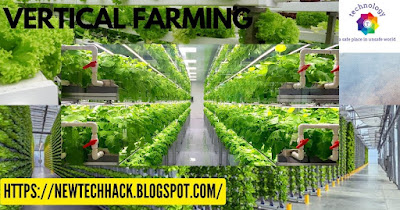Vertical farming
has emerged as a groundbreaking solution to address the challenges of conventional agriculture and meet the growing demand for food in a sustainable manner. By utilizing innovative technologies and vertically stacked growing systems, vertical farming enables the cultivation of crops in controlled indoor environments. This article explores the concept of vertical farming, its benefits, and its potential impact on sustainable agriculture, food production, and urban environments.
I. Understanding Vertical Farming:
Vertical farming involves growing crops in vertically stacked layers or shelves, typically within climate-controlled indoor environments such as warehouses or high-rise buildings. This method utilizes advanced technologies, including hydroponics, aeroponics, and LED lighting systems, to provide optimal conditions for plant growth without relying on traditional soil-based farming.
II. Efficient Use of Space:
Vertical farming optimizes land and space utilization, making it ideal for urban areas with limited available land. By utilizing vertical space, multiple layers of crops can be grown, significantly increasing the production capacity compared to traditional farming methods. Vertical farms can be established in urban settings, bringing agriculture closer to consumers and reducing the environmental footprint associated with long-distance transportation.
III. Year-Round Crop Production:
Vertical farming allows for year-round crop production independent of seasonal limitations. By creating artificial environments, farmers can control temperature, humidity, lighting, and nutrient levels, providing consistent and optimal conditions for crop growth throughout the year. This continuous production helps address the challenges of seasonal variations, climate change, and food supply chain disruptions.
IV. Water Efficiency:
Vertical farming utilizes water-efficient systems such as hydroponics and aeroponics. Hydroponics involves growing plants in nutrient-rich water solutions without soil, while aeroponics suspends plant roots in a mist or air environment. These methods significantly reduce water usage compared to traditional soil-based agriculture. Additionally, vertical farming allows for water recirculation and nutrient recycling, minimizing water waste and nutrient runoff.
V. Reduced Environmental Impact:
Vertical farming offers several environmental benefits. By growing crops indoors, it reduces the need for pesticides and herbicides, resulting in reduced chemical use and lower environmental pollution. The controlled environment of vertical farms also minimizes the impact of extreme weather conditions, pests, and diseases, reducing crop losses and the need for intensive pest management practices.
VI. Enhanced Crop Yield and Quality:
Vertical farming provides optimal conditions for plant growth, resulting in enhanced crop yields and quality. The controlled environment allows farmers to fine-tune factors such as light intensity, nutrient levels, and temperature, which can lead to faster growth rates and increased yields compared to traditional farming. Vertical farms can also cultivate crops with higher nutritional value and consistent quality due to controlled inputs and conditions.
VII. Local Food Production and Food Security:
Vertical farming facilitates local food production, reducing reliance on long-distance transportation and supporting food security. By growing crops in urban areas or near population centers, vertical farms can supply fresh produce directly to local communities. This localization of food production reduces the environmental impact of transportation, ensures food availability, and enhances resilience in the face of disruptions to global food supply chains.
VIII. Opportunities for Innovation and Research:
Vertical farming provides a platform for continuous innovation and research in agriculture. As the technology advances, new techniques, automation systems, and crop varieties are developed to optimize productivity and sustainability. Vertical farming also enables experimentation with new farming methods, such as multi-layered systems, integration of renewable energy sources, and integration with smart technologies for precise monitoring and management.
Conclusion:
Vertical farming holds immense potential to transform agriculture by enabling efficient use of space, year-round crop production, reduced environmental impact, and enhanced food security. By integrating advanced technologies, vertical farming offers a sustainable solution to address the challenges of conventional farming and provide fresh, high-quality produce to urban populations. As vertical farming continues to evolve and gain traction worldwide, it is poised to play a significant role in shaping the future of agriculture, fostering sustainability, and ensuring a resilient food system for generations to come.


.jpg)



No comments:
Post a Comment